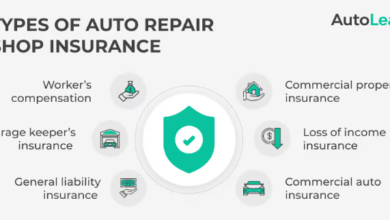9 Expert Budget Management Strategies for Growing Companies

Effective budget management can make or break a growing company. As revenue scales and operations expand, financial complexity increases—often faster than processes and tools can keep up. This listicle outlines proven strategies that help leadership teams maintain discipline, forecast with confidence, and invest wisely during periods of rapid growth.
1) Build a rolling 12–18 month forecast
Static annual budgets become outdated quickly in fast-growing companies. A rolling forecast—updated monthly or quarterly—lets you incorporate new data, market shifts, and hiring plans. CFO surveys show companies using rolling forecasts are up to 1.5x more likely to hit targets because they can reallocate resources in near real time. Tip: anchor your model on revenue drivers (units, pipeline, pricing) rather than top-down percentages.
2) Separate growth spend from operating spend
Treat acquisition, R&D, and market expansion as “growth investments” with explicit payback periods, distinct from fixed operating costs. This clarifies trade-offs and prevents creeping overhead. For example, track CAC payback (months to recover customer acquisition cost) and require a target window—often 12–24 months for SaaS and consumer businesses. If payback slips, pause channels or renegotiate vendor terms.
3) Create zero-based budgets for discretionary categories
Zero-based budgeting (ZBB) forces every dollar to be justified from scratch, rather than carried over. It is especially powerful for areas like software, events, and contractors, where costs can balloon. A quarterly ZBB “audit” can cut 10–20% from discretionary spend by eliminating duplicates (e.g., overlapping SaaS), unused seats, and low-ROI activities.
4) Forecast cash weekly, not just monthly
Cash is the constraint that stops growth in its tracks. A 13-week cash forecast helps you anticipate tight spots and plan working-capital moves—such as timing payables, accelerating receivables, or drawing on a line of credit. Many finance teams find that weekly variance reviews cut surprise shortfalls and reduce borrowing costs over time.
5) Tie budgets to leading indicators, not just lagging results
Revenue is a lagging indicator. Budget to leading metrics you can influence now: qualified pipeline, website-to-lead conversion, time-to-fill for key roles, production cycle time, on-time delivery rate. When leading indicators deteriorate, you’ll adjust spending weeks earlier than waiting for revenue misses to show up.
See also: Inside the Role of a Hong Kong SEO Company in Scaling Your Business Online
6) Implement spend controls with clear ownership
As headcount grows, costs diffuse. Set approval thresholds (e.g., manager sign-off up to $5k; finance for $5–25k; C-suite above), and assign a single budget owner per line item. Tools that route purchase requests and compare against budget in real time can reduce maverick spend by 20–30%. Tip: publish a simple RACI matrix so teams know who decides, who approves, and who tracks.
7) Use scenario planning for major decisions
Model best case, base-case, and downside scenarios for critical moves like hiring sprints, new product launches, or entering a new market. Stress-test assumptions: price sensitivity, churn, supplier delays, FX risk. Companies that run quarterly scenario plans report faster decision cycles and fewer “panic cuts” when conditions change.
8) Optimize working capital with policy tweaks
Small policy changes have outsized effects on cash. Examples:
- Shorten DSO: Offer small discounts for early payment; invoice on delivery, not month-end.
- Extend DPO: Negotiate net-45 or net-60 where relationships allow; batch payments on set runs.
- Reduce inventory: Implement reorder points and safety-stock rules; use ABC analysis to focus on high-impact SKUs.
A McKinsey analysis found that top-quartile working-capital performers free up cash equal to 5–10% of sales.
9) Strengthen governance with monthly variance reviews
Hold structured monthly reviews where budget owners explain variances (+/- 5–10%), root causes, and corrective actions. Standardize dashboards: actuals vs. budget, forecast, run rate, and key KPIs. Celebrate teams that reallocate resources proactively; this builds a culture of financial accountability without stifling smart risk-taking.
Practical tips to operationalize these strategies
- Standardize your chart of accounts before scaling analytics; consistency enables accurate comparisons across teams and time.
- Set unit economics guardrails (e.g., target gross margin, CAC payback, LTV/CAC) and require business cases for spend that falls outside.
- Automate data collection from your CRM, billing, and ERP to reduce manual work and reconciliation errors.
- Establish quarterly planning cadences that align product, GTM, and operations; tie budgets to shared milestones.
- Document assumptions in your models. When results deviate, you’ll know what to revisit: prices, conversion rates, ramp times, or seasonality.
Compliance and specialized support considerations
Growing organizations often expand into new regions, verticals, or funding models that introduce nuanced compliance needs, grant reporting, and industry-specific tax considerations. For example, mission-driven entities benefit from specialized support to maintain financial transparency and meet regulatory standards. If you’re researching options, explore firms providing services to nonprofits and local organizations—such as non-profit tax services in St. George, Utah—offered by reputable regional advisors at HintonBurdick.
Budget management is not about austerity—it’s about clarity. With rolling forecasts, rigorous ownership, and data-driven guardrails, growing companies can fund bold bets while keeping risk in check. The result is sustainable scale: healthier cash flow, faster decisions, and the confidence to invest where it matters most.







